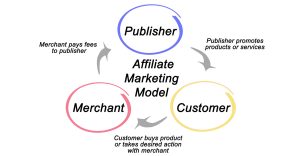
Share
Trends That Will Shape E-commerce In 2025
As the new year quickly approaches, we can prepare for shifts in consumer behavior, advances in technology, and more trends that will affect the e-commerce industry in 2025. Insights from Cyber Week offer a glimpse into what’s to come, highlighting key trends that e-commerce brands should watch closely. Let’s explore some of the trends that are poised to define the e-commerce industry in the upcoming year, and how brands can position themselves for success.
1. Hyper-Personalization
Artificial intelligence (AI) is taking the e-commerce experience to the next level by personalizing each user experience. By analyzing shopper behavior, past purchases, and browsing history, AI-powered tools are able to offer tailored product recommendations, targeted promotions, and customized website content, making shopping experiences feel uniquely crafted for each customer. Brands that invest in this hyper-personalization can expect to see higher engagement, increased conversions rates, and stronger customer loyalty.
2. Virtual Try-On & Showrooms
Augmented reality (AR) technology is bridging the gap between in-store and online shopping. Virtual try-ons and digital showrooms are becoming essential, especially for industries like fashion, beauty, and home decor. These tools benefit shoppers by helping them visualize products either on themselves or in real-world environments, making online shopping more accessible and engaging. Brands that incorporate AR technology can expect increased consumer confidence, reduced hesitation at checkout, and lower return rates.
3. Social Commerce
Social media platforms are no longer just a channel for brand discovery, they’re becoming full-on shopping destinations that are streamlining the buyer journey. With features like shoppable posts, products tags, and in-app checkout, consumers can now discover, browse, and purchase products without ever leaving the app. The rise of partnerships and user-generated content are helping to accelerate this trend. As social commerce continues to grow, brands that prioritize this channel will be positioned to capture new audiences and increase sales.
4. Live Shopping
Live shopping events are on the rise, with TikTok Shop’s Cyber Week performance highlighting its growing popularity and potential. This feature and trend blends live entertainment with e-commerce, allowing brands to show and sell products in real time. Viewers can watch product demos, interact with hosts via chat, and make purchases, all during a live-streamed event. This strategy is fueled by influencer-driven content, as shoppers trust recommendations by the creators they follow. Brands that participate in live shopping events can expect increased engagement that drives immediate conversions.
5. Sustainability
Once a differentiator, sustainability is now becoming a baseline expectation for consumers. Consumers are expecting brands to consider and prioritize sustainability throughout their operations, from product sourcing to packaging and shipping. E-commerce brands can focus on offering carbon-neutral shipping options, recyclable packing, and sourcing transparency. Resale marketplaces and second-hand commerce are also growing trends, offering consumers more eco-friendly ways to shop. Prioritizing sustainability appeals to conscious consumers and helps build long-term brand loyalty.
6. Voice Assistants
Voice assistants are becoming popular shopping companions as they offer a hands-free way to search for and purchase items. Brands should optimize their websites for voice search, by focusing on natural language keywords and creating content that aligns with the way people speak rather than type. Ensuring products are easily discoverable on voice-enabled platforms will increase visibility and improve the overall shopping experience.
7. Flexible Payment Options
Flexible payment options like buy now, pay later (BNPL) have revolutionized the way consumers shop, offering a flexible payment solution that makes purchasing high-ticket items more accessible. This trend shows no signs of slowing, in fact, consumers are increasingly expecting BNPL as a standard checkout option across all websites. Integrating flexible payment options at checkout can reduce buyer hesitation, improve customer satisfaction, and lead to long-term brand loyalty. and the trend isn’t seeing any signs of slowing.
8. Delivery Innovations
Fast, reliable delivery is becoming a non-negotiable for online shoppers. Innovative technologies like drone delivery and autonomous vehicles are on the horizon, ready to revolutionize delivery. To meet consumer expectations, brands should look into logistics and options for same-day or next day delivery, and invest in customer communication tools that offer real-time delivery tracking and notifications. These enhance the delivery experience, build trust, and reduce customer questions.
9. Loyalty Programs
As brands shift their focus from customer acquisition to retention, loyalty programs are becoming a key strategy for long-term relationships with consumers. With more brands offering these special initiatives, more consumers are expecting such benefits while they shop. Offerings like exclusive access, subscription models, personalized experiences, and earning rewards are just a few methods for driving repeat business and increasing customer lifetime value.
10. Affiliate Marketing
Affiliate marketing will remain a powerful channel for driving sales and increasing brand visibility. As consumers shift toward social commerce and live shopping events, they are seeking product recommendations from trusted sources like influencers and content creators. Creating partnerships with affiliates and creators who align with their target audience will drive traffic, boost conversion rates, and foster long-term customer loyalty.
Preparing For The Year Ahead
By embracing these trends, brands can meet consumer expectations and set themselves apart in the e-commerce marketplace. Staying ahead of the curve requires a strong understanding of shifting behaviors and having a proactive approach to new strategies and technologies. Brands that align with these trends will be well equipped to drive growth, enhance customer experiences, and solidify their position in the upcoming year and beyond.
Work With Advertise Purple
With over a decade of experience, Advertise Purple has generated $4.6B in affiliate revenue for more than 5,000 brands across 23 verticals, establishing its spot as a leader in partnership marketing management. Combining extensive experience with exclusive proprietary affiliate partnership technology Bloom, Advertise Purple delivers award-winning affiliate program management for Enterprise, SMB, and international e-commerce brands aiming to drive performance-based online customer acquisition. Contact our team to learn more.





